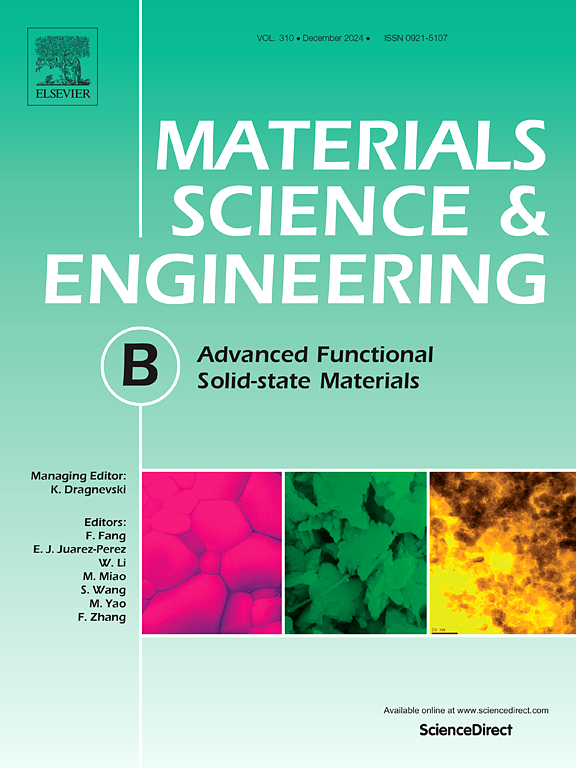Semiconductive PbI2-doped poly(dopamine–co–aniline) copolymer: Spectroscopic properties, band gap energy and crystallinity
IF 3.9
3区 材料科学
Q2 MATERIALS SCIENCE, MULTIDISCIPLINARY
引用次数: 0
Abstract
In this research, the effects of PbI2 doping on the properties of the poly(dopamine-co-aniline) (pDa-An) copolymer have been investigated. The doped and undoped pDa-An copolymer samples were characterized using FT-IR, UV–vis. absorption, optical band gap energy (Eg), FL emission spectroscopy, SEM-EDS, XRD, XPS, and electrical conductivity measurements. Notably, the PbI2 doping at pH 4 significantly enhanced the light absorption capability of the copolymer. The optical band gap energies (Eg) were calculated and the presence of PbI2 reduced the Eg values of the copolymer. From the FL emission quenching measurements, the binding equilibrium constant, Ka, of PbI2 to the copolymer was calculated to be 3.02 × 107 M−1. The XRD measurements indicated that the PbI2-doped copolymer, when prepared under acidic conditions, exhibited high crystallinity. The doped and undoped pDa-An copolymer showed electrical conductivity on the order of 10−5 S/cm. The PbI2-doped pDa-An copolymer is a promising candidate material for the applications in solar cells, electrochemical devices, and fluorescence-based technologies due to its semiconductivity, enhanced light absorption, reduced band gap energy and high crystallinity.

求助全文
约1分钟内获得全文
求助全文
来源期刊

Materials Science and Engineering: B
工程技术-材料科学:综合
CiteScore
5.60
自引率
2.80%
发文量
481
审稿时长
3.5 months
期刊介绍:
The journal provides an international medium for the publication of theoretical and experimental studies and reviews related to the electronic, electrochemical, ionic, magnetic, optical, and biosensing properties of solid state materials in bulk, thin film and particulate forms. Papers dealing with synthesis, processing, characterization, structure, physical properties and computational aspects of nano-crystalline, crystalline, amorphous and glassy forms of ceramics, semiconductors, layered insertion compounds, low-dimensional compounds and systems, fast-ion conductors, polymers and dielectrics are viewed as suitable for publication. Articles focused on nano-structured aspects of these advanced solid-state materials will also be considered suitable.
 求助内容:
求助内容: 应助结果提醒方式:
应助结果提醒方式:


